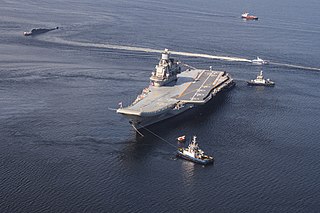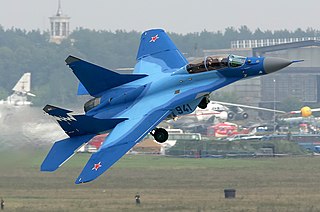
An aircraft carrier is a warship that serves as a seagoing airbase, equipped with a full-length flight deck and facilities for carrying, arming, deploying, and recovering aircraft. Typically, it is the capital ship of a fleet, as it allows a naval force to project air power worldwide without depending on local bases for staging aircraft operations. Carriers have evolved since their inception in the early twentieth century from wooden vessels used to deploy balloons to nuclear-powered warships that carry numerous fighters, strike aircraft, helicopters, and other types of aircraft. While heavier aircraft such as fixed-wing gunships and bombers have been launched from aircraft carriers, these aircraft have not landed on a carrier. By its diplomatic and tactical power, its mobility, its autonomy and the variety of its means, the aircraft carrier is often the centerpiece of modern combat fleets. Tactically or even strategically, it replaced the battleship in the role of flagship of a fleet. One of its great advantages is that, by sailing in international waters, it does not interfere with any territorial sovereignty and thus obviates the need for overflight authorizations from third-party countries, reduces the times and transit distances of aircraft and therefore significantly increases the time of availability on the combat zone.

A carrier battle group (CVBG) is a naval fleet consisting of an aircraft carrier capital ship and its large number of escorts, together defining the group. The CV in CVBG is the United States Navy hull classification code for an aircraft carrier.

The Kuznetsov-class aircraft carrying cruiser, Soviet designation Project 1143.5, is a class of STOBAR aircraft carriers operated by the Russian and Chinese navies. Originally designed for the Soviet Navy, the Kuznetsov-class ships use a ski-jump to launch high-performance jet aircraft and arrestor gears for landing. The design represented a major advance in Soviet fleet aviation over the Kiev-class carriers, which do not have full-length flight deck and could only launch VSTOL aircraft. The Soviet Union's classification for the class was as a heavy aircraft-carrying cruiser, which permits the ships to transit the Turkish Straits without violating the Montreux Convention. However, the Chinese variants are classified as aircraft carriers.

INS Viraat was a Centuar-class light aircraft carrier of the Indian Navy. INS Viraat was the flagship of the Indian Navy until INS Vikramaditya was commissioned in 2013. The ship was completed and commissioned in 1959 as the Royal Navy's HMS Hermes, and decommissioned in 1984. It was sold to India in 1987. INS Viraat was commissioned into the Indian Navy on 12 May 1987, and served for almost 30 years.

The Sukhoi Su-33 is a Soviet/Russian all-weather carrier-based twin-engine air superiority fighter designed by Sukhoi and manufactured by Komsomolsk-on-Amur Aircraft Production Association, derived from the Su-27 and initially known as the Su-27K. Compared with the Su-27, the Su-33 has a strengthened undercarriage and structure, folding wings and stabilators, all for carrier operations. The Su-33 has canards, and its wings are larger than the Su-27 for a slower stall speed. The Su-33 has upgraded engines and a twin nose wheel, and is air refuelable.

The Indian Navy is the maritime branch of the Indian Armed Forces. The President of India is the Supreme Commander of the Indian Navy. The Chief of Naval Staff, a four-star admiral, commands the navy. As a blue-water navy, it operates significantly in the Persian Gulf Region, the Horn of Africa, the Strait of Malacca, and routinely conducts anti-piracy operations and partners with other navies in the region. It also conducts routine two to three month-long deployments in the South and East China seas as well as in the western Mediterranean sea simultaneously.

Baku was a Kiev-class aircraft carrier of the Soviet Navy and the Russian Navy from 1987 to 1996. In 1991 the ship was renamed Admiral Flota Sovetskogo Soyuza Gorshkov in Russian service.

The Kiev class, Soviet designation Project 1143 Krechyet (gyrfalcon), was the first class of fixed-wing aircraft carriers built in the Soviet Union for the Soviet Navy.

INS Vikramaditya is a modified Kiev-class aircraft carrier and the flagship of the Indian Navy. The carrier entered into service in 2013.

The Mikoyan MiG-29K is a Russian all-weather carrier-based multirole fighter aircraft developed by the Mikoyan Design Bureau. The MiG-29K was developed in the late 1980s from the MiG-29M. Mikoyan describes it as a 4+ generation aircraft.

Cochin Shipyard Ltd (CSL) is the largest shipbuilding and maintenance facility in India. It is part of a line of maritime-related facilities in the port-city of Kochi, in the state of Kerala, India. Of the services provided by the shipyard are building platform supply vessels and double-hulled oil tankers. It built the first indigenous aircraft carrier for the Indian Navy, the INS Vikrant. The company has Miniratna status.

The Komandarm Fedko class is a class of replenishment tankers operated by the Indian and Chinese navies. Four ships of the Komandarm Fedko class were constructed by the Soviet Union, later Russia, of which one was bought by India, one by China and two are in commercial service. INS Jyoti is the third largest ship in the Indian Navy after the aircraft carrier INS Vikramaditya.
INS Vishal, also known as Indigenous Aircraft Carrier 3 (IAC-3), is a planned aircraft carrier to be built by Cochin Shipyard Limited for the Indian Navy. It is intended to be the third aircraft carrier to be built in India after INS Vikrant (IAC-1) and another Vikrant-class aircraft carrier (IAC-2). The proposed design of this class will be a new design, featuring significant changes from Vikrant, including an increase in size and displacement. An Electromagnetic Aircraft Launch System (EMALS) CATOBAR system is also under consideration. Its name Vishal means 'grand' in Sanskrit.

Liaoning is a Chinese Type 001 aircraft carrier. The first aircraft carrier commissioned into the People's Liberation Army Navy Surface Force, she was originally classified as a training ship, intended to allow the Navy to experiment, train and gain familiarity with aircraft carrier operations. Following upgrades and additional training in late 2018, Chinese state media announced that the ship would shift to a combat role in 2019.

INS Hansa, is an Indian naval air station located near Dabolim in Goa, India. It is India's biggest naval airbase. The military air base has a civil enclave, that operates as Dabolim Airport.

INS Vikrant is an aircraft carrier in service with Indian Navy. The carrier is India's fourth carrier and the first to be built in India. It was constructed by the Cochin Shipyard Limited (CSL) in Kochi, Kerala. The namesake Vikrant is a tribute to India's first aircraft carrier INS Vikrant (1961). Vikrant means "courageous" in Sanskrit. The motto of the ship, "जयेम सम् युधिस्पृधः" (Sanskrit), means "I defeat those who dare to challenge me" (English).

Vice Admiral Krishna Swaminathan, AVSM, VSM is a serving Flag officer in the Indian Navy. He currently serves as the Chief of Personnel. He earlier served as the Controller of Personnel Services, Chief of Staff of the Western Naval Command, Flag Officer Defence Advisory Group (FODAG), Flag Officer Commanding Western Fleet (FOCWF) and Flag Officer Sea Training (FOST). He was the second Commanding Officer of the aircraft carrier INS Vikramaditya.















